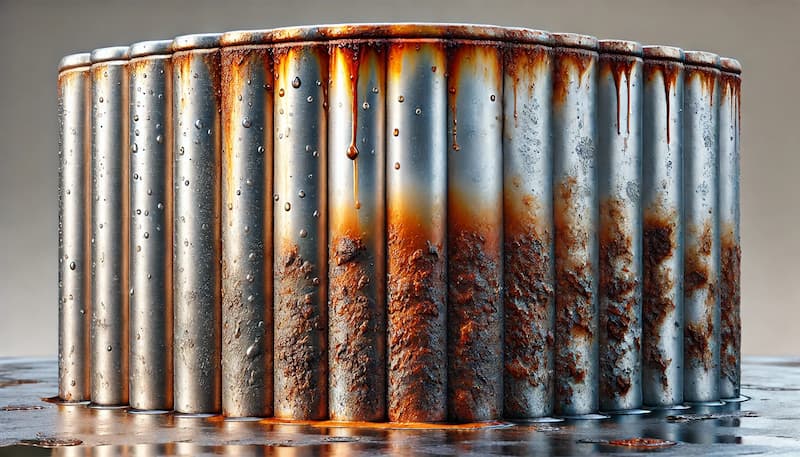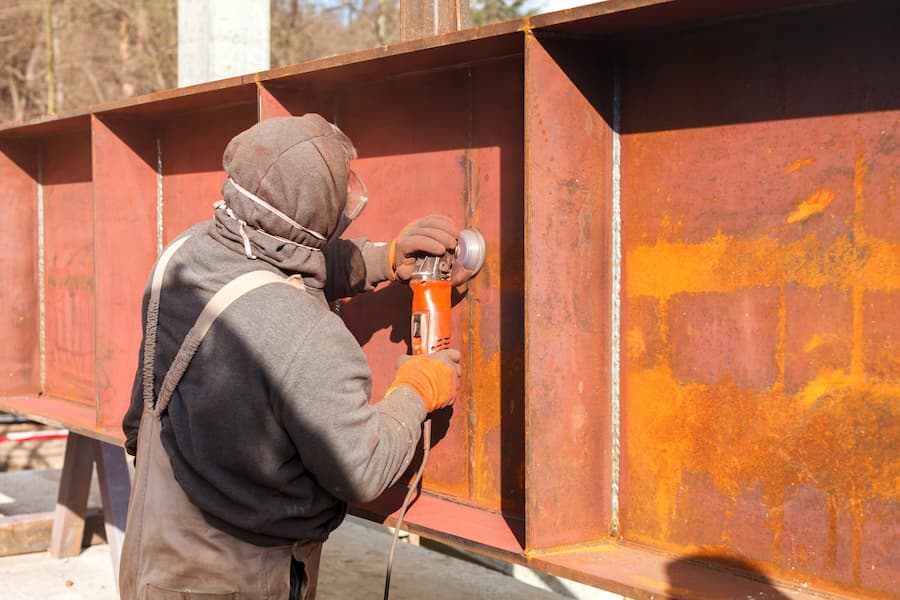No products in the cart.
Choosing the Right Rust Converter: The Best Rust Converter and Rust Remover Guide
October 26, 2024
By Xion Lab
Free Shipping
easy returns
secure paymentS
FAQ | MY ACCOUNT | SUPPORT
October 26, 2024
By Xion Lab
Rust is a persistent problem for anyone dealing with metal surfaces. Left untreated, it can severely damage metal, compromising its strength and durability. That’s where rust converters come in, offering a solution to transform rust into a stable compound that prevents further corrosion. Selecting the right rust converter can make all the difference in protecting your metal surfaces. This guide covers everything you need to know, from understanding rust formation to choosing and applying the best rust converter for your project.
A rust converter is a chemical solution that reacts with rust to transform it into a stable compound. This process prevents further rust formation by creating a protective barrier. Unlike rust removers, which scrape away rust, a rust converter alters the chemical structure of rust, making it safe to leave on the surface and ready for a primer or top coat. It’s a must-have for dealing with rust on large surfaces or areas where scraping might not be practical.

Rust forms when metal is exposed to oxygen and moisture, leading to the process of oxidation. The resulting corrosion can manifest in several ways, depending on the metal type and the environment. Light rust is typically surface-level and can be easily treated, while extensive or severe rust penetrates deep into the metal and requires a stronger approach. Understanding the type of rust you’re dealing with helps in choosing the right rust converter. For example, water-based rust converters are suitable for light rust, while acid-based converters are more effective for heavy rust.
When addressing rust, you’ll need to decide between a rust converter and a rust remover. Rust removers are acid-based solutions that strip away rust entirely, leaving bare metal. In contrast, rust converters chemically react with rust, transforming it into a stable compound that can be primed or painted over. Rust converters are especially useful for large surfaces or when it’s impractical to remove all rust. On the other hand, rust removers are better suited for intricate or smaller surfaces where precise rust removal is necessary.
Rust converters come in two primary types: water-based and acid-based. Water-based rust converters are known for being eco-friendly and safer to use, making them ideal for light rust or household projects. In contrast, acid-based rust converters are more potent and effective for dealing with severe or extensive rust. Your choice will depend on the type of rust and the metal surface involved. Using the right product ensures effective rust removal and long-lasting protection.
Before selecting a rust converter, it’s important to assess the severity of the rust on your metal surface. Light surface rust can usually be treated with a water-based rust converter, while severe rust requires the stronger action of an acid-based product. Inspect the rusted area to determine whether the rust is surface-level or has penetrated deeply into the metal. Choosing the right rust converter depends on this assessment.
Choosing the right rust converter for your project is crucial for achieving optimal results. Consider factors such as the type of metal surface, the extent of the rust, and the converter’s effectiveness. Water-based rust converters are a good choice for general household items, while acid-based converters are ideal for more severe industrial or automotive projects. Matching the converter to the rust’s severity and the metal type ensures the rust is fully neutralized.

Before applying a rust converter, it’s essential to prepare the metal surface properly. Remove any loose rust using a wire brush or sandpaper to ensure the converter can penetrate the remaining rust effectively. Skipping this step can lead to incomplete rust conversion and a less durable finish. A clean surface allows the rust converter to react fully with the rust and deliver the best results.
Start by closely inspecting the rusted area to gauge the severity of the rust. Identify areas with loose rust that need to be removed before application.
Select the rust converter based on your project. If you are dealing with light rust, a water-based converter will likely suffice. For heavier rust, opt for an acid-based product that provides more aggressive rust treatment.
Thoroughly clean the rusted surface by scrubbing away any loose rust and debris. This ensures the rust converter can fully penetrate and react with the remaining rust.
Apply the rust converter evenly across the rusted areas. Make sure all affected areas are well covered to ensure complete rust conversion.
Allow the rust converter to dry completely. This process typically takes 24 to 48 hours, depending on environmental conditions and the product used. The rust will convert into a stable, paintable surface.
If rust remains visible after the initial application, reapply the rust converter to ensure complete conversion. This is especially important for heavily rusted surfaces.
Once the rust converter has dried, apply a protective top coat or primer to seal the surface. This helps prevent future rust formation and ensures long-term protection.
One of the most common mistakes is neglecting to remove loose rust and dirt before applying a rust converter. This can lead to incomplete conversion and leave the surface vulnerable to future rust. Always ensure the surface is clean and free of loose rust for the converter to work effectively.
Rust converters are designed for ferrous metals like iron and steel. Applying them to non-ferrous metals, such as aluminum or copper, will not produce the desired results because these metals do not rust in the same way. Make sure you’re using the correct product for the metal type.
Using too little rust converter may prevent full penetration into the rust, resulting in incomplete conversion. Always apply enough product to cover the rusted area thoroughly to ensure a complete reaction.
After converting rust, some people skip the top coat, leaving the treated metal exposed. This can lead to future rust formation, as the rust converter alone cannot provide long-term protection. Always finish the process with a protective coating.
Rust converters offer a stable base for metal surfaces, but they must be followed by a top coat or primer to provide long-lasting protection. A rust converter chemically transforms rust, but without a protective layer, the metal remains vulnerable to moisture and air, which can cause new rust to form. Applying a high-quality top coat ensures that your metal surfaces stay rust-free for longer.
Choosing the right rust converter is essential for protecting your metal surfaces from further damage. By understanding the types of rust, the differences between converters and removers, and the correct application process, you can effectively treat rust and prevent its return. With proper maintenance and long-term care, your metal surfaces will remain rust-free, extending their lifespan and durability.